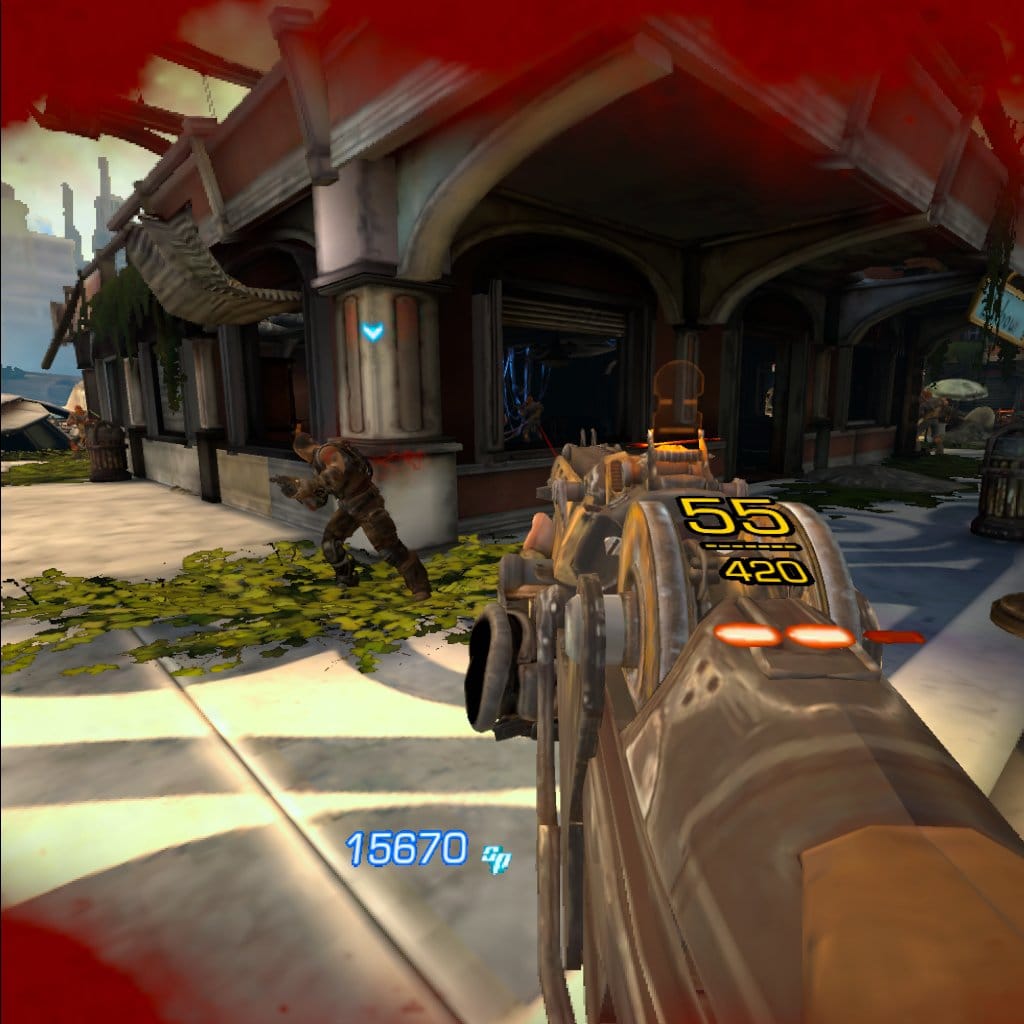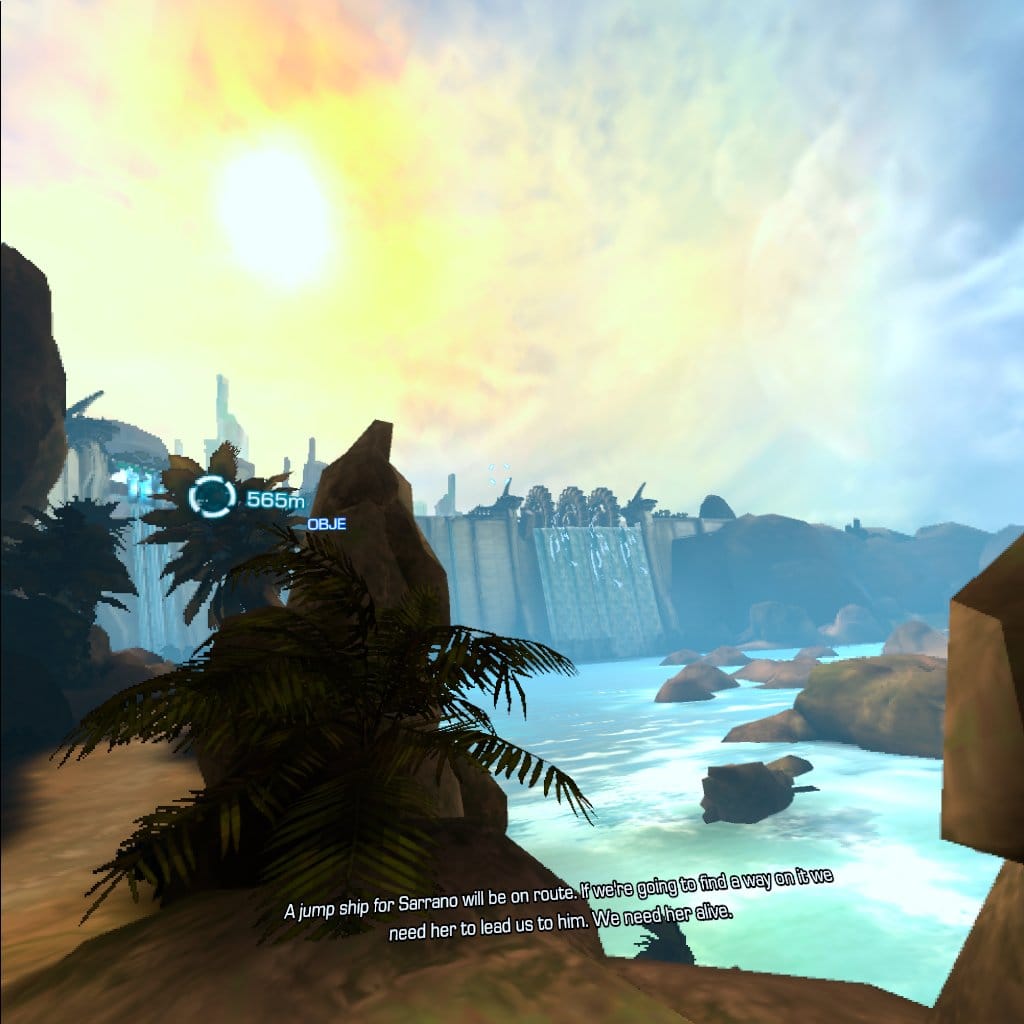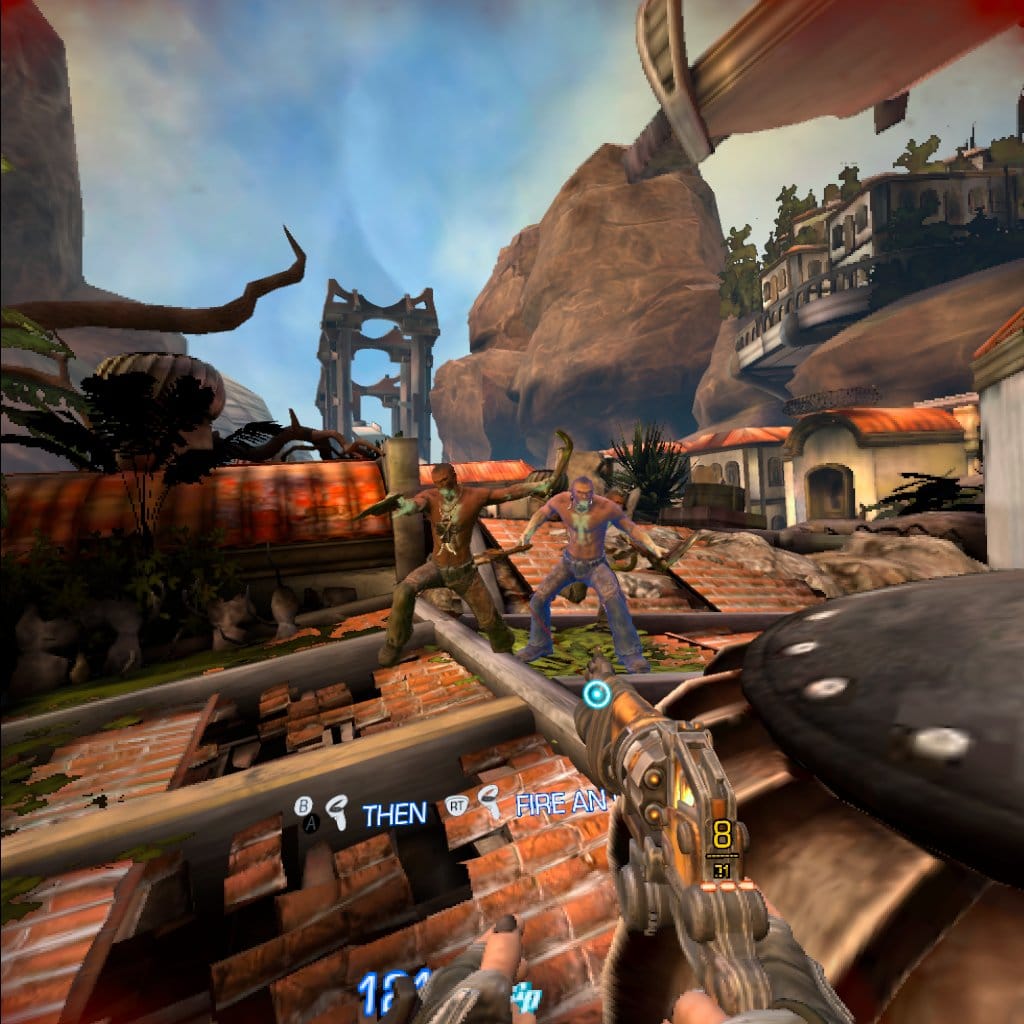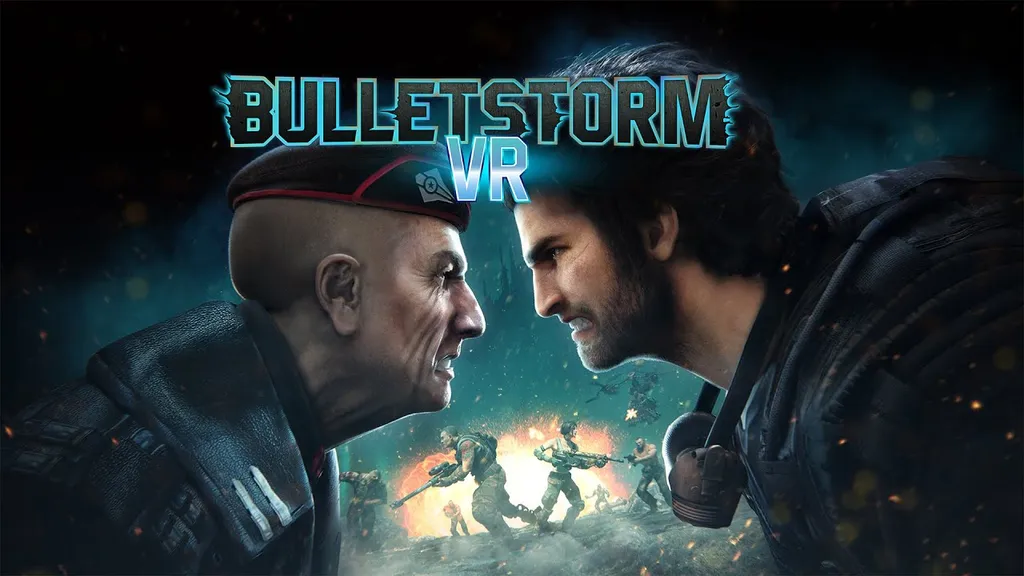Delivering cool set pieces and an action-packed B-movie story wrapped up in mechanics, design, and writing that haven't aged well, they don't make games like Bulletstorm anymore and that's a good thing.
Giving it an uninspired, occasionally dysfunctional VR port heaps even weightier baggage onto Bulletstorm's crumbling, wobbly backbone. Even by 2011 standards, the writing is painfully outdated, littered in full force with just about every trope from the mid-to-late 2000s era of hyper-macho, profane, sexist writing. Even in its stronger moments, there's an unrelenting suspicion that someone will pop up to say something something ridiculous and offensive about a woman or person of color. As you go down this grayed-out rabbit hole, suspicion becomes intuition.
What is it?: A VR adaptation of 2011 flatscreen FPS, Bulletstorm
Platforms: PC VR, PSVR 2, Meta Quest (reviewed on Quest 2)
Release Date: Out Now
Developer: Incuvo and People Can Fly
Price: $39.99

Perhaps the most damning piece of evidence against Bulletstorm's decrepit persona is a disclaimer from its developers. Upon starting the game, you're greeted with several lines of text that fall somewhere between a content warning and an admission, stating that Bulletstorm hasn't aged very well before People Can Fly divorces itself and its developers from the game's rancid vibes.
While I can understand the intent behind preserving games as they were originally released, none of this is worth preserving further than what's already been done in other ports and remasters. I wish there was another way because there are narrative threads and set pieces that really shine despite its overall gruff package. But even in those much higher points, Bulletstorm still feels outdated and this VR port isn't doing it any favors.
At face value as a flatscreen game, it's a bland if perfectly serviceable cover-based FPS. Combat encounters, though fun, all follow a very similar formula that you've likely seen done with greater success dozens of times in better cover-based shooters like Gears of War. Explosive canisters and other shootable targets fill most battlefields to add a little extra bang for your bullet. Bulletstorm VR underlines just how formulaic its level design is in bright red ink. While the original game is already first-person, the vertical movement that comes from strapping on a Quest 2 will put the camera and, therefore, the gun in places where the pancake version of the game never would.

That doesn't really break the game in the traditional sense, but it does erode the illusion that there's much variety to Bulletstorm's level designs. Most encounters I experienced boiled down to taking cover behind piles of rubble, crates, walls, or rocks of varying size, then killing an enemy behind the next piece of cover, shooting an explosive barrel behind a higher-up enemy, rinsing and repeating.
If there's one thing the VR landscape doesn't need any more of, it's uninspired shooting galleries. I've played my fair share of them, and there certainly are some fun ones. Hell, some ports of non-VR games like Resident Evil 4 are spectacular. However, most of the good ones are built on top of better games and take a less straightforward approach to being ported to VR.
Bulletstorm's whip acts as a potential saving grace to its otherwise flat combat, which admittedly gets better once you start unlocking new weapons, but its uses are pretty restricted overall. Whipping an enemy into the air, bringing them up close to you before feeding them some lead or sending them flying with a big kick never gets old, though that hardly matters when there isn't much compelling about the overall encounter and level design holding it all together.
Bulletstorm VR - Comfort
Bulletstorm VR's comfort options fall in line with what you'd expect from similar games. You can use stick-based artificial locomotion or teleportation-based movement. There are also options for smooth and snap-based camera turning with options to modify how quickly and how far the camera turns, respectively. While I mostly played Bulletstorm VR sitting down, you can play in both room scale and seated positions.

The same goes for its many set pieces which, alongside a well-paced story, are — often literally — Bulletstorm's biggest highlights. There are a lot of creative ideas for framing cutscenes or brief sequences around these moments. For example, close to the beginning, you and your crew are walking down the side of a massive skyscraper. With the streets at the horizon and a massive cityscape above it, it's a sight to behold and a clever way to reframe something we've seen before.
But again, the jump to VR kneecaps some of what makes these moments so cool. The skyscraper scene is awesome, but all you're doing during the scene is walking forward. You don't interact with anything until the moment's passed. In VR, it might give you a better means of experiencing the scale of the metropolis in front of you, but it also emphasizes just how little you can do in a lot of these moments.
Bulletstorm VR Review - Final Thoughts
As crucial as video games preservation is, some games are better left in the past. Perhaps the best thing that I can say about Bulletstorm VR is that it's a reminder of just how far both video games and VR have come. It reaffirms that VR doesn't need to serve as a second haven for old ideas and that VR can be, and often is, so much more than a generic shooting gallery. But at face value, I can't really recommend Bulletstorm VR unless you're feeling nostalgic for a bygone era and feel like revisiting Greyson and co for a quick 7-ish hour jaunt.

UploadVR uses a 5-Star rating system for our game reviews – you can read a breakdown of each star rating in our review guidelines.


























